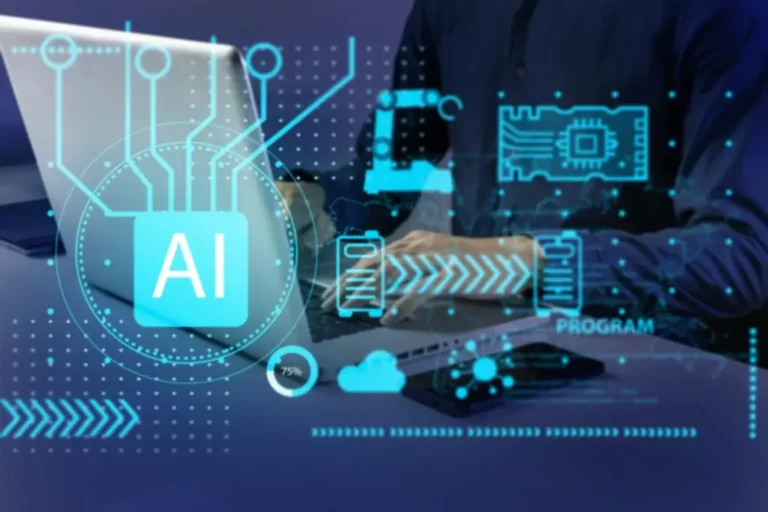Network features virtualization (NFV) is a technique that applies IT virtualization to the use case of community functions. NFV permits commonplace servers to be used for functions that once required costly proprietary hardware. By treating every how to hire a software developer incoming data level as an occasion, organizations can apply decision administration and AI/ML inference methods to filter, course of, qualify, and mix occasions to deduce higher-order info.
Advantages & Field Of Utility
Such architectures outline a baseline stage of units and providers, while permitting for some variation depending on the necessities of every location. Even better is to have a finite variety of reference designs from which to determine on for every web site, to ensure consistency. Kayly Lange is an experienced author specializing in cybersecurity, ITSM and ITOM, software what is edge computing with example improvement, AI and machine studying, knowledge analytics, and technology growth.
Edge Computing Versus Cloud Computing
By lowering the amount of knowledge that should get transmitted throughout the internet, a corporation could not have to make use of as a lot bandwidth. Therefore, they might have the ability to cut back the amount they spend each month paying their internet service provider (ISP). With private computer systems, customers could have all of the computational energy they wanted sitting right on prime of their desks. There was now not a must go to a central laptop to perform important duties. Extending IT to the mission’s edge, where edge computing, bolstered by IoT and 5G connectivity, is remodeling federal government.
What Are The Differences And Similarities Between Edge Computing And Cloud Computing?
Intel has worked with many trade companions and end prospects to deploy tens of thousands of edge computing solutions. Below are 4 edge computing use cases that present how Intel has helped companies allow new experiences and drive more-efficient operations. Manage and promote security cost-effectively throughout 1000’s of edge servers and hundreds of 1000’s of edge devices. Given the big number of edge knowledge facilities that many organizations are going to have, it’s necessary they be delivered in a standardized, repeatable and speedy method.
Healthcare suppliers can now provide “digital hospital” services together with remote system monitoring and evaluation. While edge computing brings plain benefits, it also presents some challenges that organizations should contemplate. One of the primary hurdles is the lack of normal and integrated architectures. The fast-evolving nature of edge expertise, coupled with a rapidly expanding ecosystem, could make it onerous for companies to determine appropriate solutions and create seamless integration across systems. Edge computing might be a crucial portion of enterprise IT strategy moving forward. As IoT devices develop in sophistication and innovation, they may have the power to deal with more of the information creation, administration and storage workload that right now lives on cloud servers.

The messaging and knowledge streaming capabilities of Red Hat AMQ support completely different communication patterns wanted for edge computing use instances. Businesses should combine a safety strategy to edge just as they would for their total cyber security landscape. Establishing enterprise security practices alone won’t suffice, nor will relying on patch administration solutions every time an error is found. When considering security for edge computing, each nook and nook requires the same stage of security and repair visibility that will get included within the central knowledge middle. Start by using safety greatest practices similar to multi-factor authentication, malware safety, endpoint protection, and end-user training. As the digital panorama continues to reshape, edge computing stays a linchpin innovation, basically altering data processing and connectivity norms.
Edge computing options empower you to remain aggressive and deliver distinctive user experiences by bringing information processing closer to the source and decreasing latency. When it comes to edge computing, Fastly stands out as a vanguard platform provider, offering a broad suite of providers designed to meet the various needs of recent enterprises. As customers come to anticipate increasingly customized and immersive experiences, purposes require extra knowledge processing and logic in actual time. Edge computing helps mitigate these obstacles by decentralizing the information processing.
For enterprises and service providers, edge means low-latency, extremely available apps with real-time monitoring. A step further is autonomous vehicles—another example of edge computing that involves processing a considerable quantity of real-time information in a state of affairs where connectivity could additionally be inconsistent. Because of the sheer quantity of information, autonomous autos like self-driving automobiles process sensor knowledge on board the car to have the ability to scale back latency. But they can still connect with a central location for over-the-air software updates. Edge computing facilitates the processing of delay-sensitive and bandwidth-hungry functions near the info supply by pre-processing data. The proper mixture of cloud- and edge-based applications is vital to maximum performance.

Edge computing—or just “edge”— moves laptop storage and processing (now usually just known as “compute”) to the edge of the network. This is the place it is closest to users and gadgets and most critically, as close as potential to information sources. But the choice of compute and storage deployment is not restricted to the cloud or the sting. A cloud data center might be too distant, however the edge deployment may simply be too resource-limited, or physically scattered or distributed, to make strict edge computing practical. Fog computing usually takes a step back and places compute and storage sources “inside” the data, but not necessarily “at” the information.
This proximity to knowledge sources not solely reduces latency but in addition conserves bandwidth since less data needs to travel throughout networks. Considering that most Americans own smartphones and many have tablets, cell edge harnesses this vast array of cellular devices to supply significant distribution and computing energy. However, additionally it is restricted because mobile devices lack the aptitude of more conventional data centers and gadgets. IBM — Edge computing is a distributed computing framework that brings enterprise purposes nearer to knowledge sources such as IoT gadgets or native edge servers. In right now’s ever-evolving landscape of information management, the game-changing idea of edge computing has emerged. Traditional information handling strategies faced important limitations in accommodating the exponential progress in information quantity and the proliferation of internet-connected units.
Traditionally, information produced by sensors is commonly both manually reviewed by people, left unprocessed, or sent to the cloud or an information middle for processing, and then sent back to the system. And whereas cloud computing supplies computing sources, the information transmission and processing places a big strain on bandwidth and latency. The always-on, instantaneous feedback that edge computing offers is particularly important for purposes the place human safety is a factor. For example, it’s crucial for self-driving cars, the place saving even milliseconds of information processing and response instances may be key to avoiding accidents. It’s additionally important in hospitals, the place medical doctors rely on correct, real-time knowledge to treat sufferers. “Put one other method, edge computing brings the data and the compute closest to the purpose of interaction.”
Control over the house, to make sure only authorized personnel have access to edge infrastructure. In all these situations and extra, edge deployments are crucial in addressing these points. See how integrating edge computing transforms the means in which you manage and deliver content globally. The Splunk platform removes the limitations between information and action, empowering observability, IT and safety teams to ensure their organizations are safe, resilient and revolutionary.

That means the first two are more suited for resource-intensive processes and organizations with multiple totally different wants, whereas the second two are greatest fitted to highly specialised tasks. With the variety of options out there for edge computing at present, it can be challenging to know which one is right in your group’s wants. These elements affect the design, architecture and deployment choices for sensible application.
A cellphone, for example, whereas powerful in comparison with what was produced a long time in the past, still pales compared to even a mid-range laptop computer when it comes to energy. The capabilities of a data center can further dwarf the potential of the majority of edge gadgets. Some of the simplest forms of edge computing contain primary events and easy processes. For example, a device that may monitor someone’s pulse and blood pressure can be positioned on their body after which ship info to an edge-based server. Only sure information is then despatched to the cloud, while most of it’s dealt with within the edge community.
- Examples embody oil rigs, ships at sea, remote farms or different distant places, similar to a rainforest or desert.
- This leads to faster suggestions and real-time responses, crucial for industries where even milliseconds can make a distinction.
- Red Hat Enterprise Linux provides a big ecosystem of tools, functions, frameworks, and libraries for constructing and operating applications and containers.
Transform Your Business With AI Software Development Solutions https://www.globalcloudteam.com/ — be successful, be the first!
